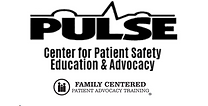SAFER MEDICAL CARE THROUGH SHARED DECISION MAKING: IS INFORMED CONSENT A PATIENT SAFETY ISSUE?
- ilene Corina

- May 16, 2021
- 5 min read
Updated: Jul 18

By Ilene Corina, BCPA, Pulse Center for Patient Safety Education & Advocacy and John James, PhD, Patient Safety America
Many people believe that informed consent is a legal issue and doesn’t belong in the patient safety conversation.
Ray was working when he received the phone call that his mother was going to have a procedure to remove gallstones. As his mother’s legal healthcare surrogate, he was informed about any healthcare decisions that needed to be made since she had mental illness and did not, in most cases, understand medical procedures.
Ray was told they were going to perform an ERCP but first do a CT scan and then an MRCP, and finally the ERCP. Having worked in a hospital setting, Ray knew that they were looking for his
He stopped them and asked what exactly the procedures were, how they are done, and what the expected outcome was. He asked what the risks of harm were, and whether there were any other choices, including doing nothing. He also knew to ask if his mother would be given any drugs off-label (not approved by the FDA for her specific age). Ray was asking for shared decision-making before he gave his informed consent. When the answers he received were incomplete, he asked for more complete information. Not everyone knows to do that.
Shared decision-making is a dialog between clinician and patient in which the physician elicits the patient’s preferences for treatment given the available options for care. For example, if one option for treatment is a powerful chemotherapeutic drug, the patient may prefer to forgo treatment if his quality of life will be seriously impaired by fatigue, nausea, or mental disturbances. At the age of 90, Kevin was diagnosed with pancreatic cancer and offered chemotherapy. During shared decision-making, Kevin learned that the side effects were debilitating. These days, two years later, Kevin is doing well with only minimal growth of his tumor.
According to the American Medical Association[i], informed consent to medical treatment is fundamental in both ethics and law. Patients have the right to receive information and ask questions about recommended treatments so they can make well-considered decisions about care.
In a hospital, patients are often handed a sheet of paper to sign, saying that they consent to a procedure. Informed consent should be the end result of shared decision-making between patient and clinician. The process leading to becoming a fully informed patient may require assertive questions. For example, the patient may be told that there is a risk of infection from a proposed procedure. The patient should ask, “What is the probability that I will get an infection and how will it be treated?” Another example is the probability of getting a life-threatening cancer from uterine fibroid surgery if the tissue is ground up before removal from the body. Originally thought to be about 1 in 10,000, it is now known to be about 1 in 350. Even the statistic of one out of thousands can be scary to some, but for others too low to worry about. Still, it is the patient’s right to decide if they want to take the chance, whether risky or not.
People don’t know what to ask, or whether they are, in fact, getting enough information, so they may “google it,” which clinicians may frown upon. There are websites for viewing how surgery is done and what a patient can expect. There are useful online sources. Decision aids for patients should be an integral part of shared decision-making. Ideally, these aids should be viewed by the patient before the patient begins the shared decision process with her clinician. Ask your clinician if the decision aid you are using is trustworthy. The proper approach to this is to communicate to the doctor that you are curious or educating yourself, not that you do not trust the clinician.
You may also ask for a second, independent professional opinion if there is appreciable risk and uncertainty associated with the proposed invasive treatment. Do not be pushed into signing a consent form until you are confident you have made an optimal decision about your care.
Although we think of informed consent as the paper we sign, it’s actually the process of informing the patient and/or family. The signature means that the discussion happened, and the signer is satisfied with the information. But what if you don’t know what information is being given? How do we know if what we are being told is enough information to warrant getting that procedure? For cancer treatment, for instance, consider reaching out to support groups either in your area or through social media. Find out about others’ experiences and what questions you should ask. This needs time, so this process should be done long before the procedure itself.
When told she had an arrhythmia, a woman aged fifty said that sounded scary, and she knew it was something potentially dangerous. She was glad to get a diagnosis. The treatment, the doctor explained, was an implantable electrical shock device to impel her heart back into a normal rhythm. The woman asked to think it over and at her next visit told her doctor that surgery was not an option. “So, what now?” She asked the doctor about other options. The doctor started her on medication. “That was ten years ago,” the woman explained. “I had to speak up and ask for the alternatives. I have never regretted that decision, nor have I had another arrhythmia episode.”
While most people will say that informed consent is a legal and ethical issue, it can also be seen as a patient safety issue and should be part of the patient safety conversation.
The process must include the patient’s full disclosure and honesty with their clinician. A full list of medications, medication reactions, past medical history and allergies are all important for the shared decision-making process. People hesitant to share their abuse of alcohol or pain medications open themselves up to potentially dangerous outcomes if the medical team is unaware of a full and accurate history of the patient. A 33-year-old woman had a dental procedure that could result in serious pain, so her dentist prescribed an opioid painkiller for her. That night she took sufficient pain pills to unintentionally kill herself. The dentist was unaware of her tendency of addiction to opioids.
The wise patient will have her questions prepared beforehand and make notes during shared decision-making. If you are not up to it, a family member, friend or even a professional patient advocate might be a good resource to ask for help. It’s always a good idea to have a support person available if you’re about to make a decision that can be as serious as surgery. A support person can help think of additional questions to ask.
The full medical history, medications and concerns should be part of any conversation that might help decide if the procedure or surgery is even appropriate for the patient. These conversations often happen at the bedside, moments before the procedure is to be done. The doctor may come to the patient in scrubs and carrying a clip board. This is not the appropriate time. It needs to happen long before that moment.
Jim had been feeling troubling symptoms and was referred to a neurosurgeon. He diagnosed a pituitary tumor and told Jim he could remove it. Jim agreed, but did not recover as expected from the surgery, and later learned that it had not even been necessary. Because most pituitary tumors are not malignant, Jim could have chosen watchful waiting, avoiding the risks associated with surgery. The state medical board assigned six hours of training to the neurosurgeon and fined him $3,000. This was a clear case of failure to give the patient sufficient information to make a safer decision.
In many cases, there will not be an unplanned outcome such as death or injury. Still, it is the patient’s right to have this information.
[i] https://www.ama-assn.org/delivering-care/ethics/informed-consent




Comments